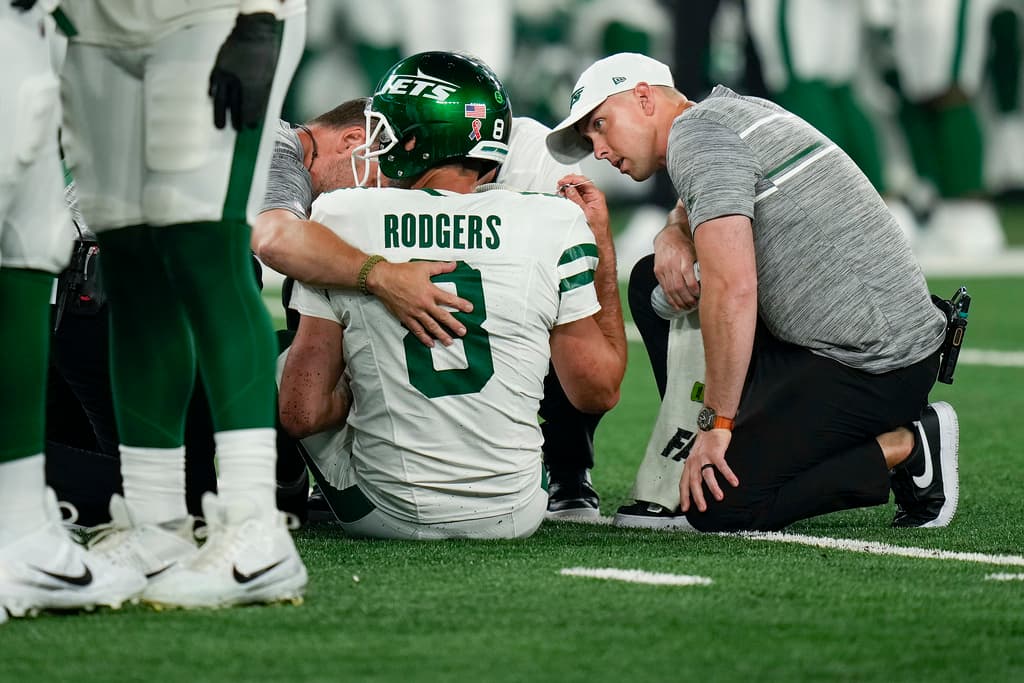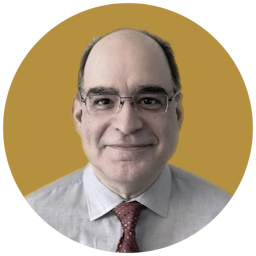Aaron Rodgers’s Injury Exposes What Could Be the Achilles Heel of AstroTurf
Calls mount for replacing the fake grass at stadiums — and parks and towns — across America.

Calls for replacing artificial turf with grass are growing louder at stadiums, towns, and parks across America. Now, the NFL Players Association is adding its voice to the chorus, demanding a return to nature as a future Hall of Fame quarterback, Aaron Rodgers, nurses a ruptured Achilles tendon.
On September 11, Mr. Rodgers made his debut with the New York Jets. It turned out to be the most-watched Monday Night Football game ever. Fans of the star-crossed franchise dared hope that he could lead them to a Lombardi Trophy, as he’d done with the Green Bay Packers.
Those green dreams came crashing down after just four snaps, when Mr. Rodgers was sacked and limped off the rain-soaked artificial turf at MetLife Stadium at East Rutherford, New Jersey. His season — and perhaps his career — were finished.
Days later, the president of the NFL Players Association, Joseph “J.C.” Tretter, renewed his call for natural grass on all game and practice fields. Noting that he played “almost exclusively on synthetic turf in college,” he says he soon understood why veteran teammates disliked it.
“Whenever I practiced on an artificial field surface,” Mr. Tretter said, “my joints felt noticeably stiffer the next day. The unforgiving nature of artificial turf compounds the grind on the body we already bear from playing a contact sport.”
Artificial surfaces have less give than grass, punishing a player’s legs and feet. Data from 2012 to 2018 find the contact injury rate for lower extremities 28 percent worse on AstroTurf as was the rate of non-contact injuries — 32 percent higher for knees and 69 percent for feet and ankles.
The original artificial turf, ChemGrass, made its NFL debut in 1966 at the Houston Astrodome, whose name it soon adopted. Today, AstroTurf has replaced grass in half of the league’s 30 stadiums. The league and the players association have asked artificial turf manufacturers to develop a surface closer to the real thing, but Mr. Tretter says there’s “no guarantee” that’s possible.
“I do think it’s time to go all grass throughout the league,” Mr. Rodgers said in November. Since MetLife has artificial turf, the four-time league MVP was also unable to practice his usual ritual of picking a few blades to enjoy “a little moment of meditation on the field” before snaps.
NFL management remains unconvinced, citing the expense of switching and the ability of fields to hold up to gridiron pounding. “You have to look at climate, too,” the NFL commissioner, Roger Goodell, said. “This is not just about, ‘Is the field going to be good in September?’ Is it also going to be good in December and January?”
The Jets’ coach, Robert Saleh, noted that Mr. Rodgers’s injury was “trauma-induced” from contact, and the NFL’s executive vice president of communications, Jeff Miller, pointed out that another quarterback tore his Achilles in the season’s first week and did so on a grass field.
The Dallas Cowboys’ owner, Jerral Jones, also favors sticking to AstroTurf. In April, he said that “league stats don’t see issues” with it at his AT&T Stadium. He said in respect of claims that grass is safer, “No facts bear that out.”
The view on the field, though, is different than in the owner’s suite.
In April, Mr. Tretter said that the league cites an outlier year, 2021, to show parity in injuries, but that in 2022, “the gap — much like the NFL’s credibility with players on this issue — was as wide as it has ever been” and that “10 of the previous 11 years show … grass is a significantly safer surface than turf.”
“We wanted the NFL to protect the players with grass fields,” a Jets wide receiver, Randall Cobb, said after Mr. Rodgers’s injury, “but the NFL is more worried about making money. Profit over people. It’s always been the case. I’ve never been a fan of turf; that’s my stance.”
Mr. Rodgers was expected to draw a lot of attention for the Jets this season, offering NFL fans the chance to see if he could transplant the old Green Bay magic to New York. Now, his most enduring legacy may be heralding a return to grass fields, having showcased that injuries are AstroTurf’s Achilles heel.
_________
Correction: Aaron Rodgers led the Packers to a Lombardi Trophy once. An earlier version misstated his track record with Green Bay.

